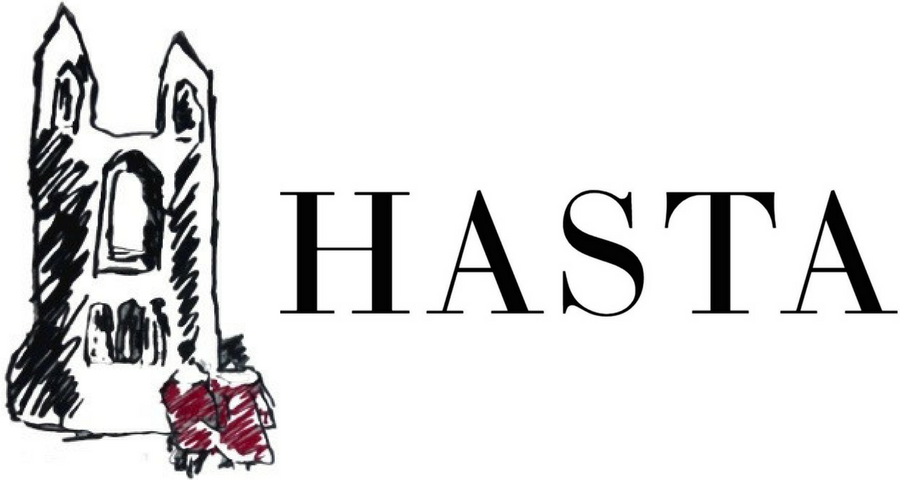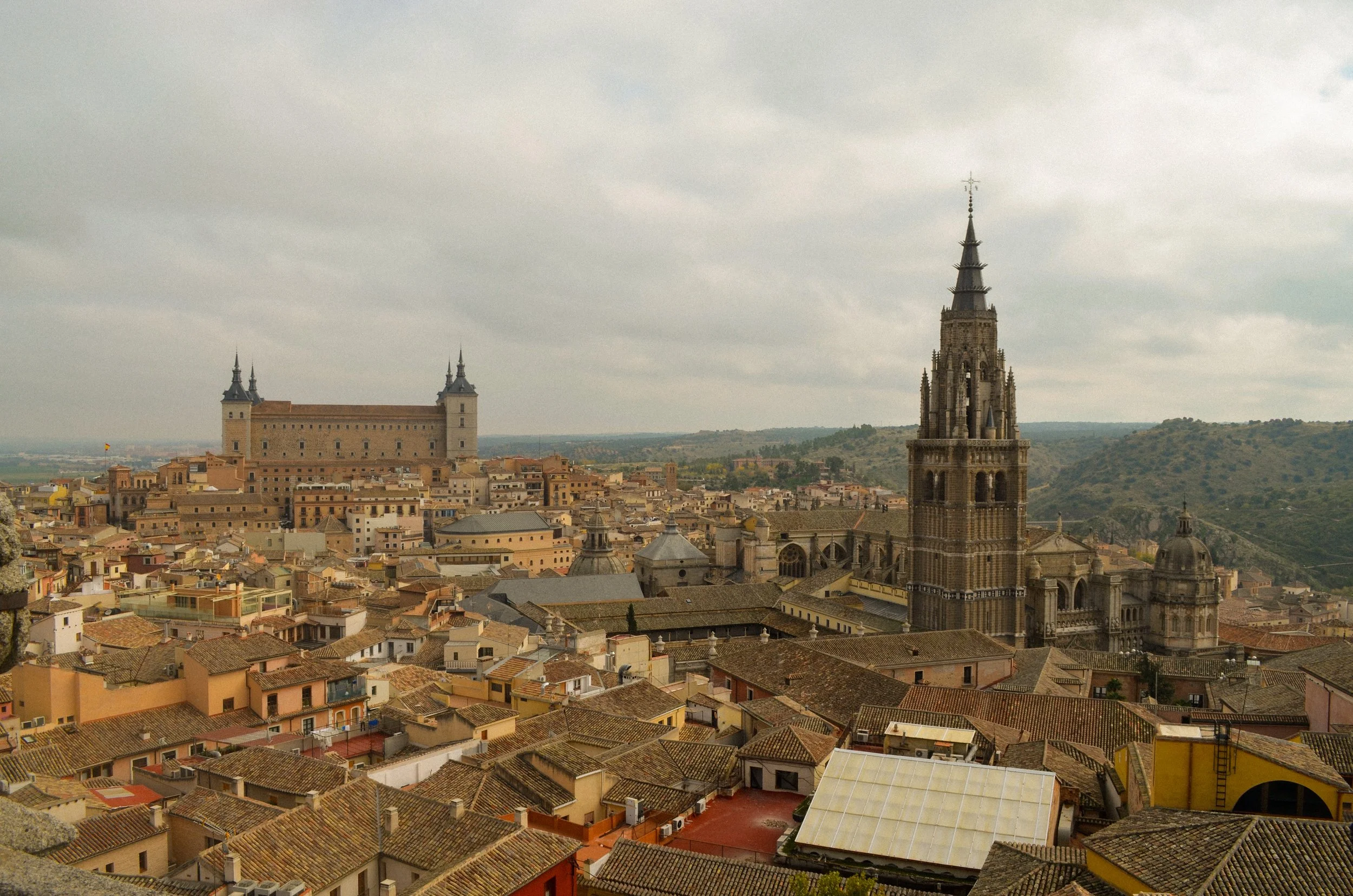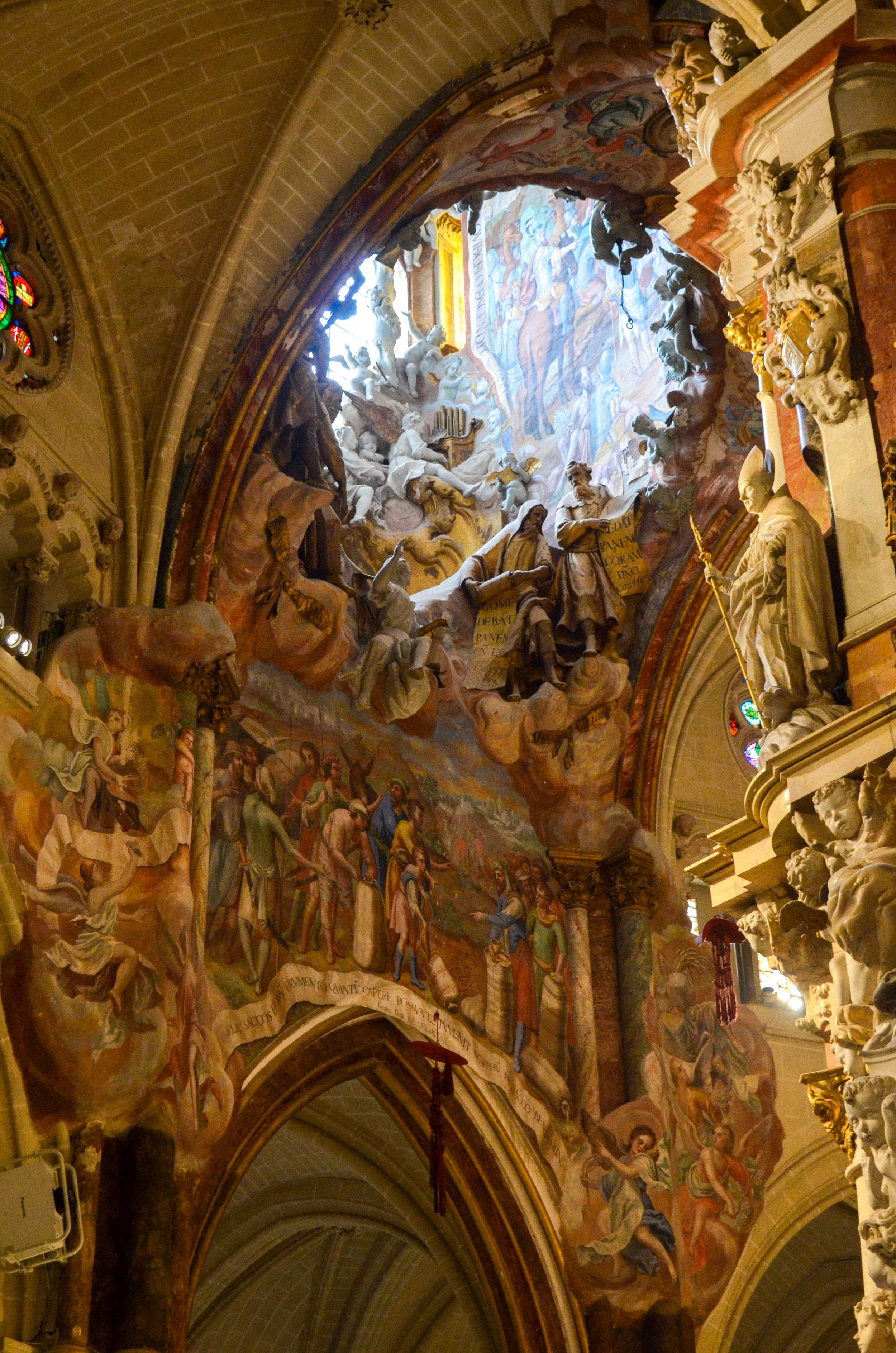Toledo: Crux of Iberia
By Madina Burkhanova
View of Toledo. Image courtesy of author, 2024.
My journey with Toledo, Spain, began four years ago, when I drove through briefly on my way out of Madrid. Since that day, the town has perennially occupied a place in my mind. This certainly isn’t a unique perspective - most visitors experience its captivating balance of charm and tranquility. It was during my drive that I also decided that my final-year undergraduate dissertation would centre Toledo in some way. Having just submitted this dissertation, now feels like a very apt time to reflect on my most recent visit.
As part of my research process, I had the privilege of going to Toledo last October to study a specific monument: the Mosque of Cristo de la Luz. For four beautiful autumn days, I blissfully wandered around the town with a steady supply of marzipan in one hand and my camera in the other. Toledo looks and feels as though it is stuck in time with its densely packed, antiquated buildings (both religious and mundane). An hour away from Madrid in modern-day Castile-La Mancha, it is particularly incredible that Toledo has remained largely unaltered. The walk from the train station to the town centre takes you across a moat, and you are confronted with an astounding view of the town that climbs up a hill. My first day there felt like learning to navigate a labyrinth. Winding roads, steep elevations, and deceptively circular routes proved to be comedically confusing throughout my stay. Although time-consuming, these detours made Toledo feel even more captivating.
Of course, I must begin with the site of my study - and I will try my hardest to keep it brief. The name ‘Mosque of Cristo de la Luz’ seems contradictory because it is. Compared to the more infamous monuments such as Toledo Cathedral, it is rather nondescript, but for fear of sounding banal, it is very special to me. My first-year self was struck by the image of Visigothic columns supporting Islamic vaults and arches, leading you to a niche filled with Gothic frescoes and a crucifix suspended by invisible wire. Without knowing specific details, you are aware that being in this space is a rich and deeply spiritual experience. The mosque is intimate and never crowded, framed by an equally small but beautifully kept garden. It is the oldest standing monument in Toledo, dated to the year 999. Furthermore, it exemplifies one of my favourite art-historical niches: mudéjar architecture. Mudéjar is a term that typically refers to Muslims who remained in Spain after the Christian reconquest, but it has also come to define the fluid Spanish architectural style that combines Jewish, Islamic, and Christian conventions. Much of the architecture of the Iberian peninsula is defined by the historic combination of Christian and Islamic elements, but in reality, this is a two-dimensional perception. The Mosque of Cristo de la Luz embodies and reflects the nuanced power struggle between Christians and Muslims throughout the medieval period. This period has been labelled the reconquista by Spanish Catholic nationalists, implying the ‘taking back’ of power from Muslims. Without delving too much into the preconceptions that accompany the term, I assert that the widespread reconquista narrative is one to be challenged.
Crucifix in the Mosque of Cristo de la Luz. Image courtesy of author, 2024.
The Mosque of Cristo de la Luz is an afterthought for visitors, situated on the outskirts of town. Toledo’s main attraction that draws tourists in Madrid out for the day is its cathedral. The cathedral is the nucleus of the entire town - speaking from experience, whatever side road you might take will lead you right back to it. Its interior is expansive; paths lead you underground and into side exhibitions, without accounting for the vast body of the chapel itself. It is a marvel of art and architecture. Ceiling frescoes, sculptures, and metalwork are plentiful. The image below is of the Eastern side of the cathedral. I arrived at the cathedral on my second day at ten in the morning, right at its opening. Although there were still plenty of other visitors, my experience was serene compared to those waiting in the crowds outside in the afternoons.
Toledo Cathedral. Image courtesy of author, 2024.
Whatever time I did not spend in the Mosque of Cristo de la Luz or Toledo Cathedral, I dedicated to the plethora of synagogues, churches, and other mosques scattered across the town. Each monument is a unique model of the mudéjar architecture that I so love. I spent my mornings sitting and sketching, absorbing the town’s history as I happened upon it. I went into each site with no expectations and always left ridiculously impressed. October felt like the perfect season to be there. The weather was temperate, the streets largely empty, and I selfishly felt as though the entire town was working in favour of my studies.
Assorted sketches of Toledo monuments. Courtesy of author, 2024.
Despite what can only be referred to as an obsession with the Mosque of Cristo de la Luz, the highlight of my visit was actually my time spent in the main library - Biblioteca de Castilla-La Mancha. This local library is stunning and expansive, and has a panoramic view of the town that is very popular with tourists. My Spanish is passable (even to say that feels like flattery). By no means am I fluent, but I made sure to prepare for any scholarly eventuality. These eventualities were realised. I came to the library to find Spanish sources for my research that I would be unable to access elsewhere. I found plenty, but finding a way to take them with me was another story. With the help and patience of two wonderful librarians as I stumbled through my Spanish, I found a local bookshop to obtain a small Spanish book about the Mosque of Cristo de la Luz, written by local scholar Miguel Larriba. This book eventually served as a handbook of sorts for my dissertation. The librarians’ laughter is my most profound memory of the trip.
My magical perception of Toledo is largely substantiated by the personal connection I feel with it. My two trips to the town bookended my university experience. However, I believe Toledo's charm is tangible to any visitor, no matter the length of their visit or their prior relationship to the town. I spent my evenings sitting on my rooftop and looking over the town’s dense topography, feeling as though I could not have happened upon a more abundant source of academia. Its history is palpable; you feel it in its paved roads, in each convent selling marzipan, and of course in any of its many, many monuments. Although I came there to write about the Mosque of Cristo de la Luz - and write I did - I will always feel an immense privilege to have experienced Toledo as both a tourist and scholar.




